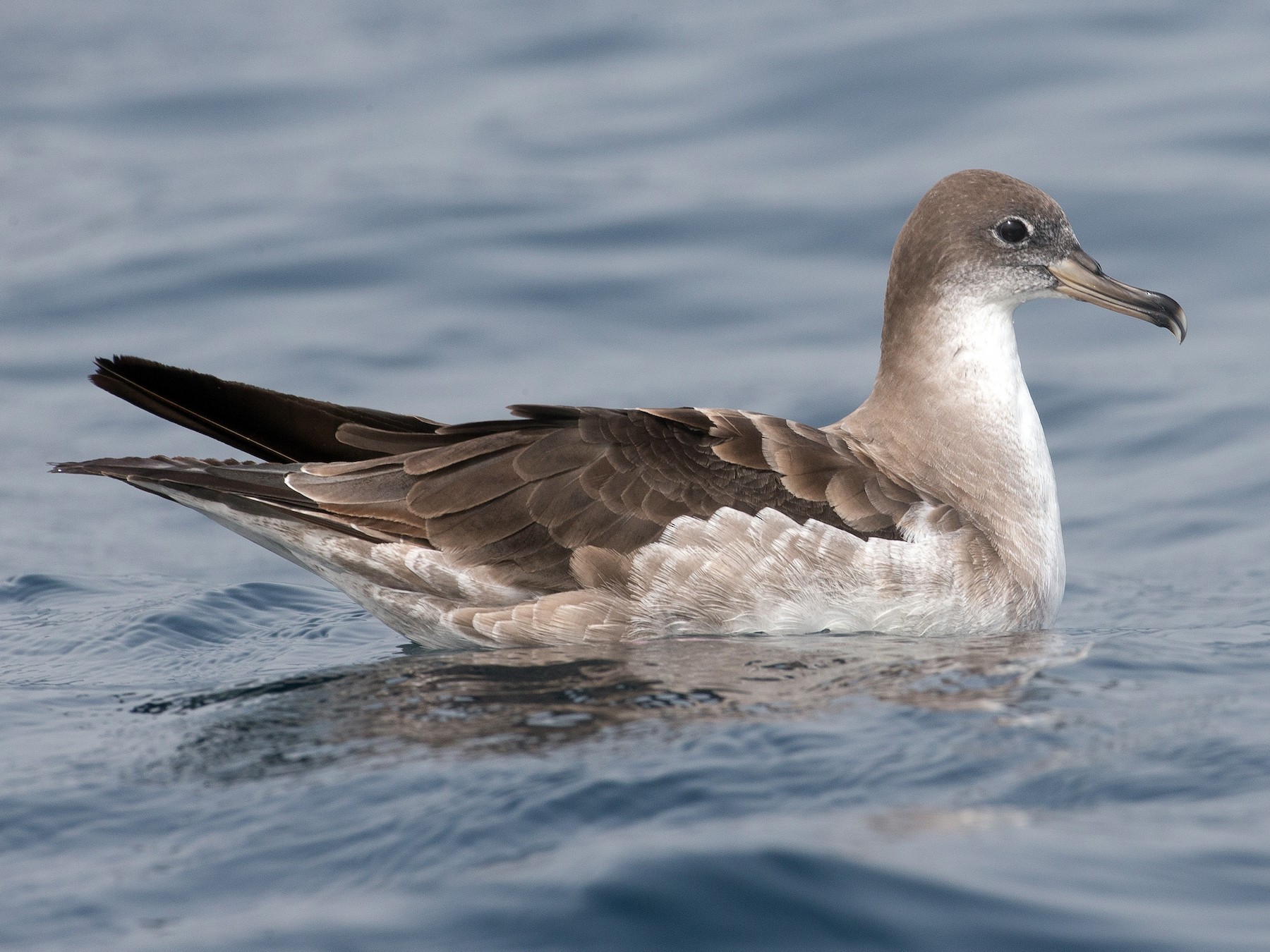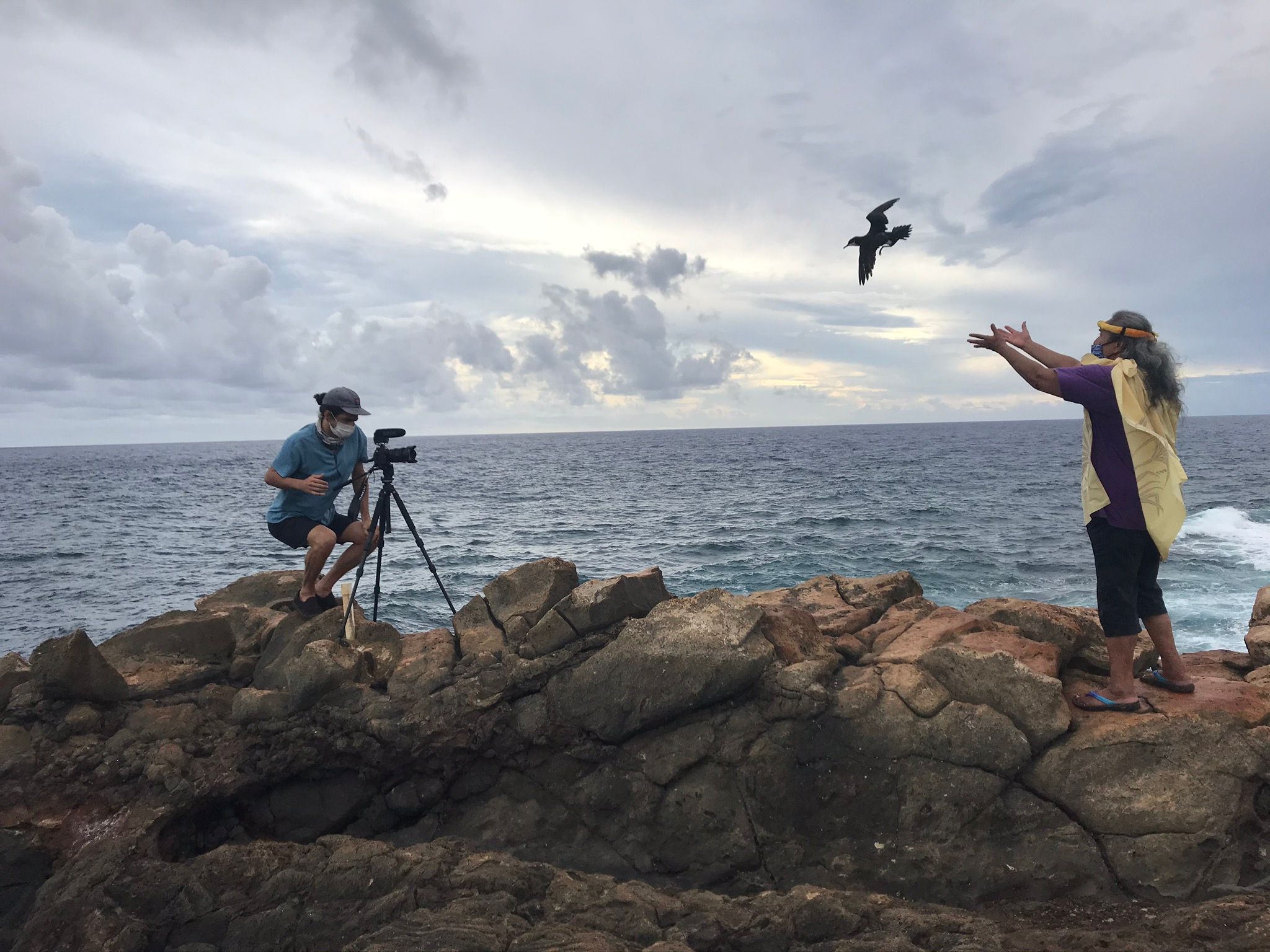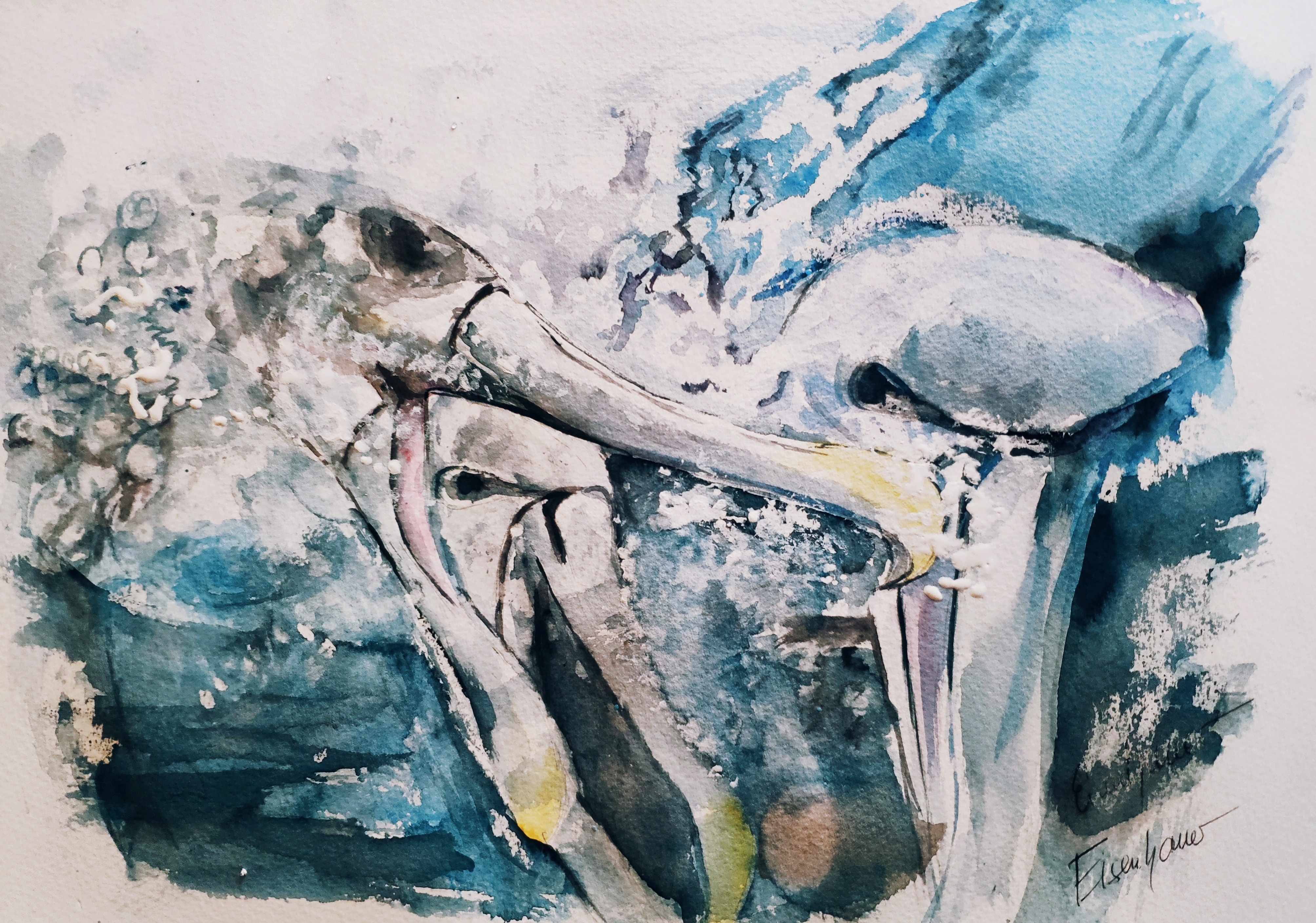
Cape Verde Shearwater at sea
Lara Cerveiro (Marine and Environmental Sciences Centre, University of Coimbra, Portugal) and colleagues have published in the journal Marine Environmental Research on variations in foraging trips of breeding Near Threatened Cape Verde Shearwater Calonectris edwardsii.
The paper’s abstract follows:
“Pelagic seabirds exhibit plasticity in foraging characteristics in relation to oceanographic conditions. This should be particularly relevant in tropical marine environments where food resources are naturally more unpredictable. We studied how inter-annual variations (2013–2018) in tropical oceanographic conditions (driver of oceanic productivity) can influence the spatial and trophic ecology of Cape Verde shearwater (Calonectris edwardsii) during the breeding season. During years of poor oceanographic conditions around the colony, birds engaged in longer trips to West Africa, showed higher spatial and behavioural consistency, and presented a wider isotopic niche. Opposite patterns were generally found for years of good oceanographic conditions, when birds foraged more on their colony surroundings. New foraging areas off West Africa were highlighted as relevant, especially during years of poor environmental conditions. This study highlights the need for long-term studies to assess variation in foraging areas and foraging decisions by seabird populations.”
Reference:
Cerveira, L.R., Ramos, J.A., Rodrigues, I., Almeida, N., Araújo, P.M., dos Santos, I., Vieira, C., Jorge M. Pereira, J.M., Ceia, F.R., Geraldes, P., Melo, T. & Paiva, V.H. 2020. Inter-annual changes in oceanic conditions drives spatial and trophic consistency of a tropical marine predator. Marine Environmental Research 162. doi.org/10.1016/j.marenvres.2020.105165.
John Cooper, ACAP Information Officer, 03 November 2020

 English
English  Français
Français  Español
Español 


